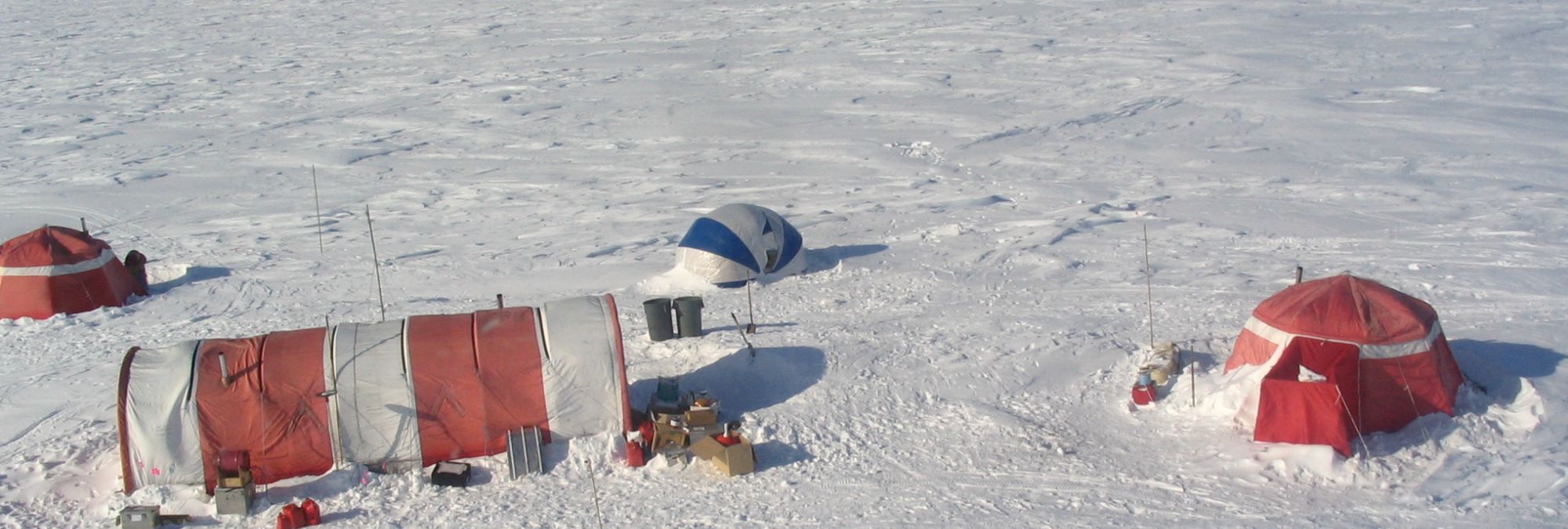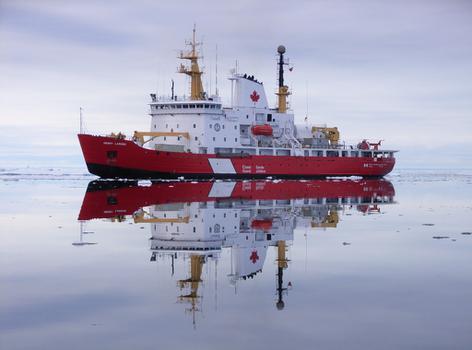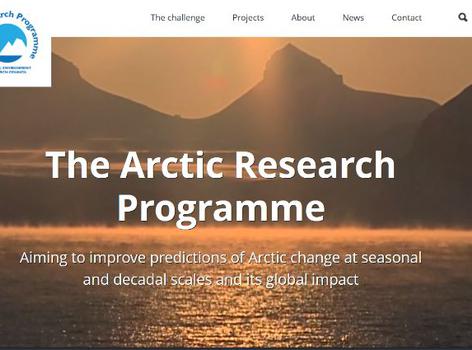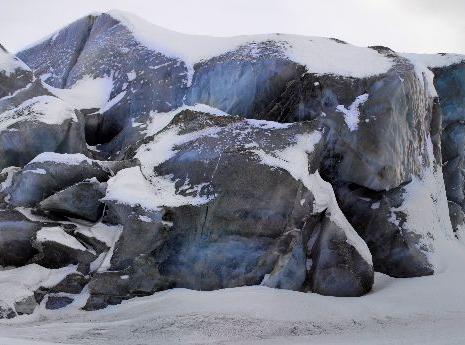The role of atmospheric, ice and oceanic interactions in the marginal ice zone (MIZ)
The evolution of the marginal ice zone (the boundary between the frozen and open oceans) and seasonal ice-edge retreat is a complex interplay between a number of processes. Wind, waves, and passing storms influence the state of the frozen ocean and how it varies over space and time.
Break up of ice can lead to warming of newly formed open water, melting of broken ice and upwelling of warmer water from below, but the link between these processes is complex, poorly understood and therefore poorly represented in large-scale sea ice models, if at all.
MIZ
The marginal ice zone – where sea-ice and open sea meet and interact - is a complex and poorly understood region which requires further study.
Barrow, Alaska
View our interactive mapA comprehensive program of autonomous data acquisition, remote sensing, and analysis has been undertaken in this project so that the role of these key processes in affecting the large-scale evolution of the marginal ice zone can be determined. More than 25 buoys have been deployed into the interior ice pack to measure the behavior of the ice and ocean over the entire marginal ice zone lifecycle. The strategy of using autonomous platforms and remote sensing ensures the full evolution of the ice cover is monitored continuously from its initial break-up, through to its transformation to a marginal ice zone and then the northward retreat of the ice edge.
Through the long-term measurement of the key oceanic, atmospheric, and sea ice processes that shape the marginal ice zone, the links and feedbacks between each can be determined and their importance at different stages in the marginal ice zone cycle established.
This affiliated project, funded by US Office of Naval Research, directly links to ‘Objective 1’ of the Arctic Research Programme – understanding and attributing the current rapid changes in the Arctic – and has additional links to the ‘TEA COSI’ and ‘SEATS’ projects led by the National Oceanography Centre in Southampton, the and the APPOSITE project led by the University of Reading.
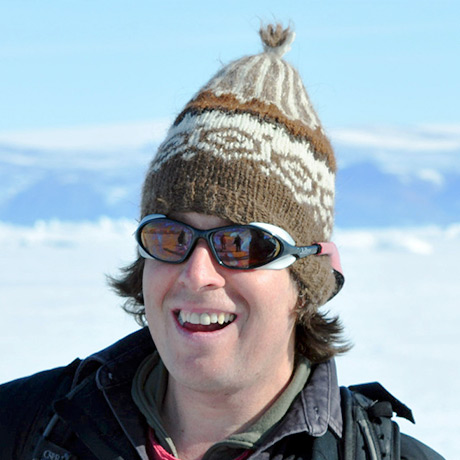
Dr Jeremy Wilkinson, Lead Investigator
Dr Jeremy Wilkinson is an expert on sea ice dynamics, thermodynamics and mechanics, ocean wave propagation through sea ice, and deep-convection and water mass modification.
He represents the UK on the Arctic Ocean Science Board (AOSB) / International Arctic Science Committee’s (ISAC) Marine Science Working Group and is a member of the Programme Advisory Board for Arctic Science for the UK funding agency NERC. In addition he is regarded as one of the world experts on the use of AUVs in the polar oceans (under ice experience with Maridan, Autosub, Gavia, Sea-Bed AUVs).
His expertise also extends through a broad range of techniques, from the remote sensing and in-situ monitoring of sea ice, through to its visualisation through the use of upward-looking sonars, and the modelling of sea ice and the flow of oil spilled under sea ice.
Dr Wilkinson’s scientific fieldwork, both in the Arctic and Antarctic, has been performed from many different platforms, including autonomous underwater vehicles, ice-breakers, helicopters, aeroplanes and ice camps. In addition his experience extends to the planning, organisation and participation of polar field campaigns (> 20 campaigns) and logistics and plays a crucial role in guiding the technological development of autonomous instrumentation, including automatic weather stations, drifting buoys, tilt-meters and sea ice mass balance buoys.
Jeremy has substantial experience in large multidisciplinary programmes e.g. ESOP-1, ESOP-2, SITHOS, CONVECTION, and DAMOCLES, which in turn is serving to widen his horizons to the holistic approach to earth-system science, and providing him with a deep understanding of the process occurring in the polar regions.
Dr Wilkinson has a number of major grants active (> €/£250k): These include the EU FP7 Arctic Climate Change, Economy and Society project (ACCESS: 2011-15), the European Science Foundation funded programme Arctic Ocean Sea-ice and Ocean Circulation Changes Using Satellite Methods: (SATICE: 2010-13), the NERC funded Sea ice Processes and Mass Balance in the Bellingshausen Sea (IceBell: 2010-13), the ONR funded MIZ programme (2012-15). Jeremy is coordinator of the new €12 million FP7 programme ICE-ARC (2014-17). It is through these and other programmes he has built up a broad network of national and international collaboration.
View other team members
